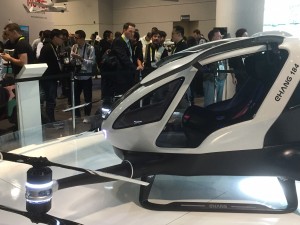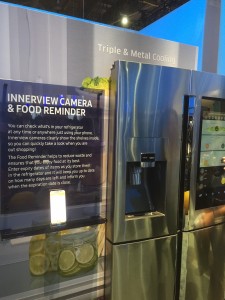 As a self-professed technophile, attending CES was a life goal for me. So in heading to 2016 CES, I couldn’t wait to find the next great thing to connect with my Sonos, Hue and SmartThings and make my “connected life” complete. More importantly, this was an opportunity to find the new advancements that would be game changers for our department, agency and clients. Bring it, Vegas!
As a self-professed technophile, attending CES was a life goal for me. So in heading to 2016 CES, I couldn’t wait to find the next great thing to connect with my Sonos, Hue and SmartThings and make my “connected life” complete. More importantly, this was an opportunity to find the new advancements that would be game changers for our department, agency and clients. Bring it, Vegas!
But, upon arrival, as I stood longingly in front of a smart refrigerator that alerts you when your food is near expiration and creates a grocery list based on your purchasing patterns, an unexpected thought occurred to me: Not many (okay, none) of my friends or peers are jumping at the opportunity to have their home play their theme song when they rise in the morning or for their lights to alter to match their mood when they return home from work. In fact, I suspect the average American consumer is barely aware that CES—or this type of technology offering—even exists.
So if it doesn’t apply to everyone, how does technology of the future apply to the audiences of today?
Brands have to find ways to make ultra-forward-thinking technology accessible for and adoptable by the mass consumer. And by doing so, brands have to be realistic about adoption curves.
Brands have to look for insights into the problems technology is attempting to solve and find more realistic ways to address these issues.
Let’s use my coveted refrigerator as an example. Sure, it’d be great if I got a text when my guacamole was about to expire. But the bigger issue here is less about having excess tortilla chips and nowhere to dip them and more about the global problem of food waste vs. food scarcity. Now that’s an entirely different subject for a separate blog post, but my point is that high-end technology isn’t the only way to solve the problem of food waste.
Packaging: Let’s rethink it. What if food packaging changed color when nearing expiration? Or, food that had a 1–2 day refrigerator life was placed in green bags, while food lasting 3–5 days had an orange package?
Existing data. Grocery stores and brands already know what consumers are purchasing. What if we used the technology that gives certain customers certain coupons to send notifications when the bananas they bought last week were better fit for banana bread?
Communities that work. The social network Nextdoor has made it exceptionally easy to alert neighbors of a lost pet. Could like-apps also offer up to neighbors that carton of milk or unopened tub of guacamole that will go bad while you’re at CES?
Perhaps I have a personal plight with the items in my fridge, but this is the type of thinking that CES inspired. What problems can we solve with the technology we already have, rather than assuming consumers are ready to adopt the latest-and-greatest—in smart fridges?
How can we solve transportation and commuter issues until the drone is ready for prime time? How can we make reality better than the virtual version?
Don’t get me wrong. I think technology is one of our best approaches to solving problems. But in doing so we can’t lose sight of the people who have never heard of CES and will never understand the need for a $10K refrigerator that beeps when their bananas are no longer that perfect shade of yellow.
We, as consumers, brands and advertisers have to be smarter than the smart things.
Now, about that robotic dog. Dog ownership sounds hard, so this is problem solver I could get behind. See you at the “dog” park.




